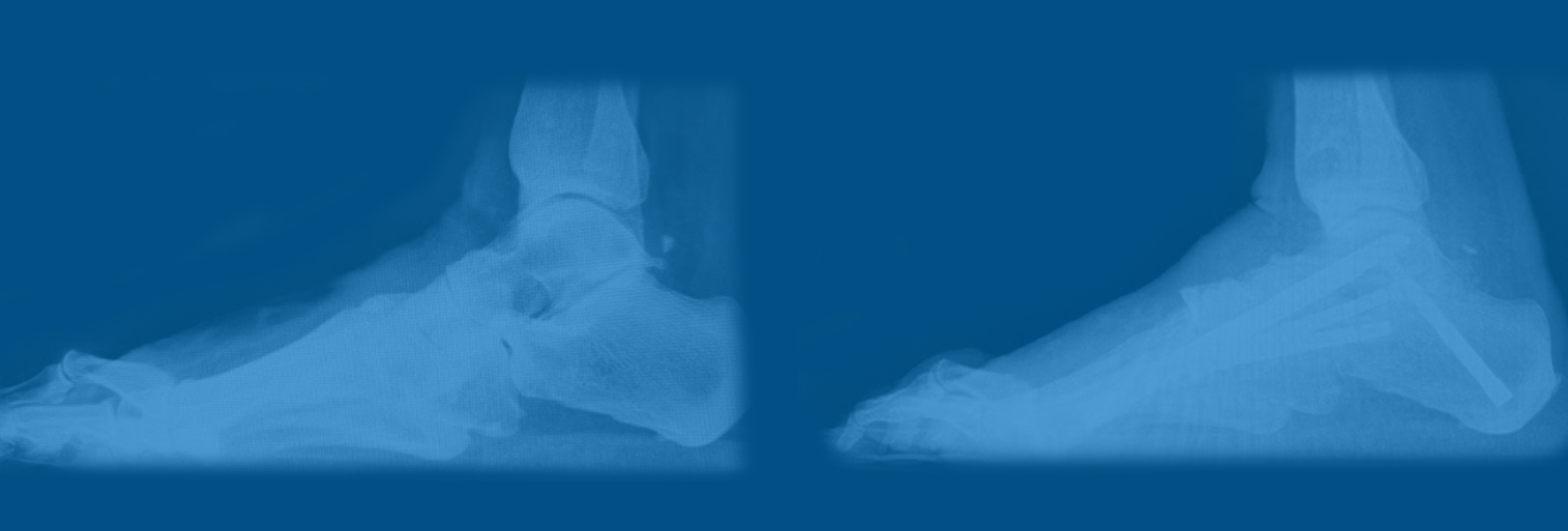
Unveiling the Science: How Charcot Foot Surgical Reconstruction Works
Charcot arthropathy, a condition of the foot and ankle caused by an inability to sense injuries, is common among individuals with diabetes. It is a complex problem resulting from peripheral neuropathy. Surgical reconstruction is a challenging procedure associated with a high-complication rate, but despite its complexity, foot reconstruction is often needed to salvage the patient’s limb.
In patients with advanced stages of the disease, the involved joints collapse, and the foot takes on an abnormal shape (rocker bottom appearance). The altered joint morphology – a result of osteopenia and lack of proprioceptive feedback – increases mechanical forces, leading to further joint deterioration in a negative feedback loop.
The initial management of acute Charcot foot relies on offloading the affected foot, either with a total contact cast, or alternatives such as the Charcot-restraint orthotic walker. The aim is to preserve the soft tissue envelope by preventing or minimizing any potential bone distortion that might arise. In more advanced stages, when patients have a disabling deformity or severe instability, conservative treatment for Charcot foot may not suffice.
Charcot foot and ankle surgical reconstruction aims to accomplish three primary goals:
• RESTORE ANATOMY – achieve a stable plantigrade foot, meaning a proper alignment. Preventing additional complications like ulceration is crucial.
• RESTORE FUNCTION – prevent the need for amputation, which is a potential consequence of Charcot foot and ankle deformity if left untreated, thus enabling patient’s mobility.
• RESTORE LIFE – manage symptoms and reduce pain, to allow patients to regain their ability for an active lifestyle, thus enhancing their overall quality of life.
Although ideally every collapsed or deformed Charcot foot case would be surgically transformed into a stable and ambulatory foot, it is important to acknowledge that not all patients are suitable candidates for major reconstructive surgery. In these cases, alternative treatment options and strategies are explored to manage the condition and improve the patient’s quality of life.
“The decision on the surgical technique depends on the underlying biomechanics and the progression of the deformity,” said Dr. Stephanie Oexeman, DPM, Oexeman Foot and Ankle, Chicago. “Tendon lengthening and tenotomies can be powerful tools to achieve a braceable foot. However, in the presence of osseous deformities, reconstruction is the preferred option.”
Surgical reconstruction of Charcot foot and ankle is technically demanding, with added challenges posed by the presence of diabetes, neuropathy, poor bone quality, and possibly infection. Patients with Charcot arthropathy require a highly individualized treatment approach, and the choice of treatment will depend on several factors. Despite these obstacles, it is possible to obtain successful clinical outcomes with thorough preoperative planning and the collaboration of a multidisciplinary team.
Charcot foot and ankle reconstruction can be achieved with internal fixation, external fixation (mainly circular), or a combination of both internal and external fixation. Super-constructs, which combine two or more devices, offer increased stability. The main indications for a combined internal and external fixation approach, with staged procedures, are severe obesity, a need for increased mechanical stability and/or soft tissue protection, control of adjacent joint mobility, and a high risk for hardware failure.
Charcot Arthropathy requires not only skilled surgical intervention but also meticulous postoperative care. While an accurate pre-operative planning and the surgical procedure itself are essential, it is equally crucial to recognize the significance of postoperative management in achieving favorable outcomes, especially in the case of extensive reconstructive surgeries.
Orthofix partners with healthcare professionals to restore anatomy, restore function and restore quality of life. Our Charcot portfolio is designed to provide the fixation hardware and the services to help our surgeons and their patients in the best possible way. If you want to know more about the surgical management of Neuropathic (Charcot) Foot, from initial diagnosis to surgical procedures and beyond, you may also want to visit this site.
If you or someone close to you is dealing with Charcot Neuropathy, it may be beneficial to explore www.LimbHealing.com for valuable insights into early detection and treatment options. This resourceful website can provide you with useful information to better understand and manage this condition.